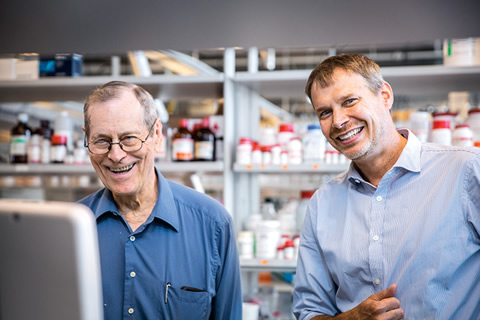Imagine if scientists could regrow your damaged liver or build you a new heart. These are the kinds of technologies that researchers at the University of Toronto and its partner hospitals are pursuing, thanks to a $114-million grant from the federal government. The new initiative, Medicine by Design, will help cement the university’s position as one of the world’s leading centres for stem cell research and the design and manufacture of cells, tissues and organs that can be used to treat degenerative disease.
“This program will allow us to take regenerative medicine to the next level,” says Peter Zandstra, a professor in U of T’s Institute for Biomaterials and Biomedical Engineering. “We’ll be able to design cells, tissues and organs from the ground up, hopefully with benefit to patients and benefit to the Canadian economy. Stem cells offer avenues to treat – and perhaps cure – devastating and costly conditions such as cardiovascular disease, diabetes, blindness, lung disease, neurodegenerative disorders and diseases of the blood and musculoskeletal system.”
Jonathan Furneaux, who flew in from St. John’s, Newfoundland, for the announcement of the grant in late July, is thrilled by the news. Furneaux, 46, says he is a “living example” of regenerative organ research. Diagnosed with lung disease five years ago, he ended up on oxygen 24 hours a day, “using all of my energy just to breathe.” He underwent a double lung transplant at Toronto General Hospital and 12 days later “I walked out of the hospital, no oxygen, no wheelchair.”
The donor lungs Furneaux received were treated by surgeons working under Dr. Shaf Keshavjee, using the “ex vivo” (outside the body) method of repairing lungs. This method has led to a 28 per cent increase in lung transplants at Toronto General. “I am living proof of the value of the research you are doing,” Furneaux said. “I can live again, dance with my wife, but most of all I can breathe again.”
The university believes Medicine by Design will enable Canada to become a major international supplier of regenerative medicine technologies – a market that is predicted to grow to $50 billion by 2019. The initiative is expected to generate new startup companies and to attract established international companies to Canada, eager to take advantage of U of T’s expertise.
The initiative will group its programs under three banners: Cells by Design (to create cells to be used in experiments to identify new, better and safer medications), Tissues by Design (to create complex tissues for use in the same way as cells, and for replacing lost or damaged tissue in humans) and Organs by Design (to create and repair organs outside the body with the goal of successfully transplanting them into human patients). These three activities will be supported by platforms in genomic engineering, immune engineering and microfabrication, and will include a program to manufacture stem cells on demand. More than 50 researchers and clinicians are involved, as well as hundreds of graduate students and postdoctoral fellows.
Medicine by Design builds on a rich legacy of U of T contributions to regenerative medicine, beginning with the demonstration of the existence of stem cells by biophysicist James Till and hematologist Ernest McCulloch in 1960. As U of T president Meric Gertler noted at the event announcing the grant, “Their breakthrough has led to an entirely new field of biomedical research.”
Watch how U of T scientists plan to take regenerative medicine to the next level
Recent Posts
U of T’s 197th Birthday Quiz
Test your knowledge of all things U of T in honour of the university’s 197th anniversary on March 15!
Are Cold Plunges Good for You?
Research suggests they are, in three ways
Work Has Changed. So Have the Qualities of Good Leadership
Rapid shifts in everything from technology to employee expectations are pressuring leaders to constantly adapt





